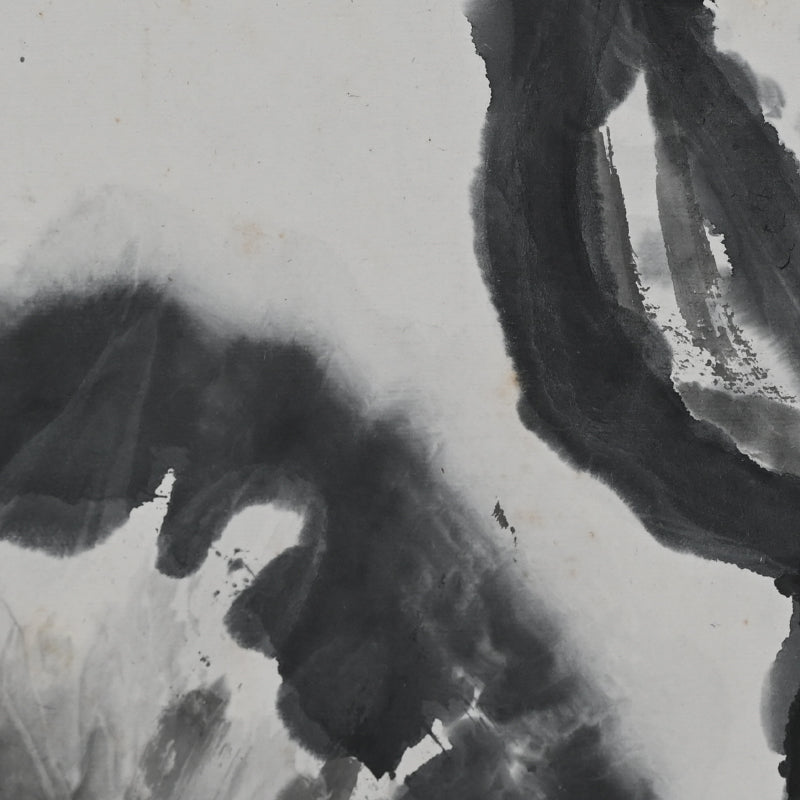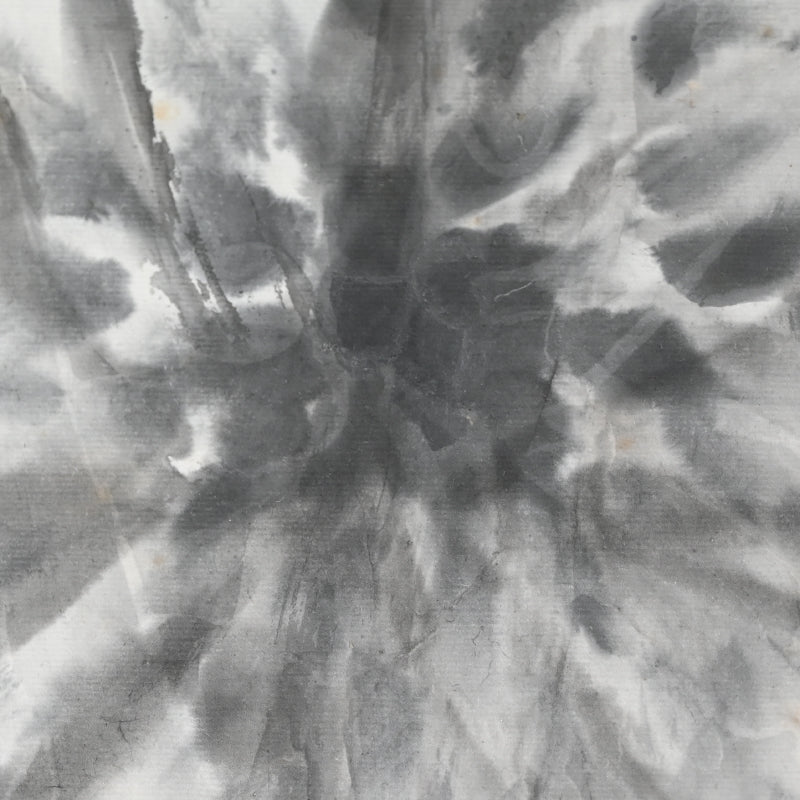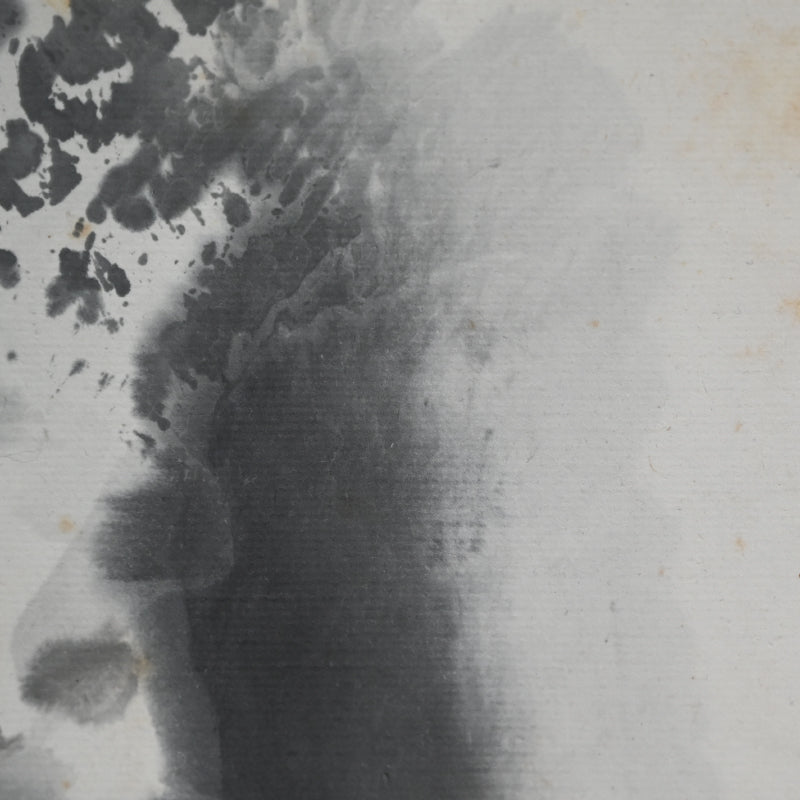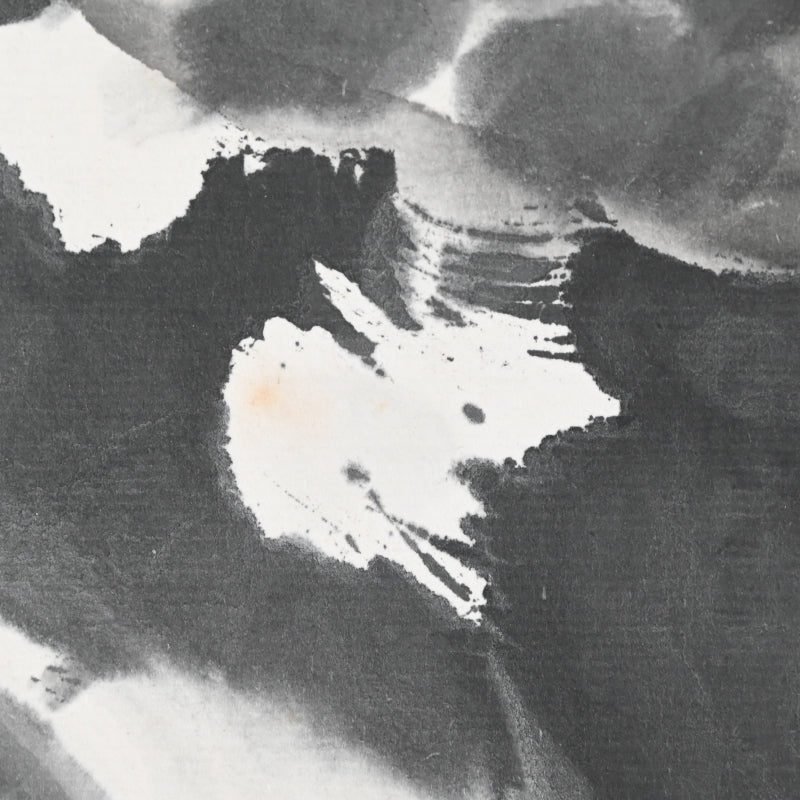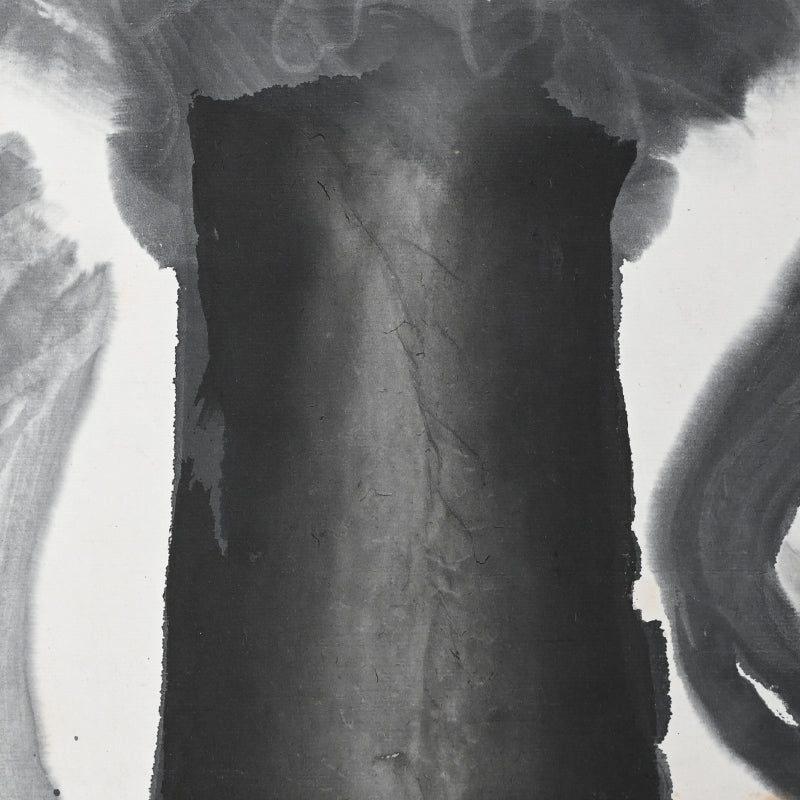Large Allium Flower Sumi-e Ink Painting ーのむら 清六 "ねぎぼうず"
Large Allium Flower Sumi-e Ink Painting ーのむら 清六 "ねぎぼうず"
Item Code: NS12
Since this product is an oversized item that requires custom shipping, please send us a message with the delivery address and we will come back to you with a shipping quote.
Dark Floral Sprays bleed into the soft paper of this large sui-e work by Nomura Seiroku depicting Negibozu, or Allium flowers. The method of application is called Bokashi, where the artist may pre-wet the paper to allow the ink to flow freely into a specific shape, or apply water to already-applied ink causing it to flow out and gradate. Here Nomura has expertly manipulated the technique to create bold flower heads on thick stalks. The wooden frame is 57.5 × 111.5 × 6 cm (22-1/2 x 43-3/4 x 2-1/2 inches). The image itself is 42 × 76.5 cm (16-1/2 x 30 inches). There is slight foxing typical of age. Allium is a genus of flowering plants with hundreds of species, including the cultivated onion, garlic, scallion, shallot, leek, and chives.
Due to size the cost of shipping will be accrued separately.
Nomura Seiroku was born in 1916 as the fourth son of a farming family in Yamanashi Prefecture. During his childhood, he was entrusted to relatives and spent his time drawing late into the night while working at a cotton mill. At the age of 17, he persuaded his parents and relatives to let him move to Tokyo, where he took on various jobs while attending the night school at Kawabata Art Academy where he formed lifelong friendships with other painteers such as Iwasaki Hajin, Komatsu Hitoshi, and Taniguchi Sango. He sought mastery of the Tsuketate technique. which involves using a rough brush held vertically to create a strong brushstroke that carves the framework of the painting without sketching.In 1943, Seiroku was drafted into the Yokosuka Navy. Around the same time, he married Tokiko Nomura, a daughter from an old family in Komatsu City, Ishikawa Prefecture, whom he had met during his art school days. As a result, he adopted the Nomura surname. In the early years of their marriage, Seiroku had little income, so in 1951, at the age of 35, he made a decisive move to focus on his artistic direction. He left his family and relocated to a cabin by Shibireko Lake in Yamanaka, Yamanashi Prefecture. There, he spent four ascetic years perfecting his "Tsuketate" technique. During this period, Nomura began creating cover illustrations for the haiku magazine "Kira" and held his first solo exhibition in Yamanashi Prefecture. He also showcased his works at various exhibitions, including the Shinseisaku Art Society Exhibition and the Japan Independent Exhibition. In 1955, after returning to his family in Komatsu City, he moved his studio to Kashiwa City, Chiba Prefecture, to facilitate exhibitions and negotiations with art dealers in Tokyo. In the 1960s, Nomura produced outstanding works using flat and thick painting techniques. From the 1970s onwards, his brushwork became more free and spontaneous, and he began incorporating his own haiku into his paintings, evolving towards a more literati painting style. Work by him is held in the Tokyo National Museum of Modern Art, the Wakayama Prefectural Museum of Art and the Yamanashi Prefectural Museum of Art where a major retrospective was held in 2000.
Share






